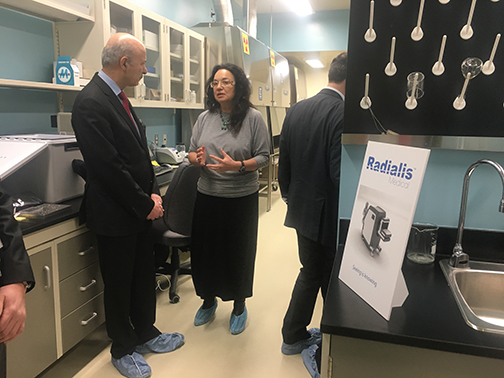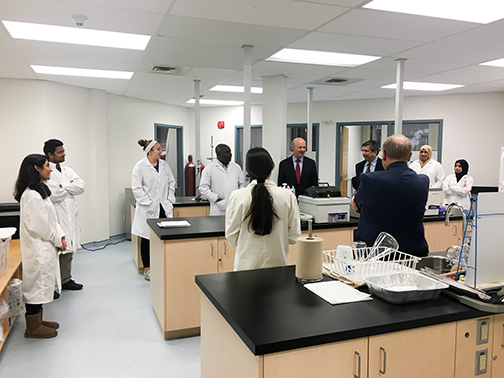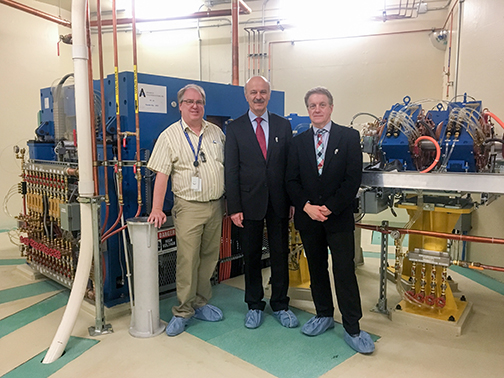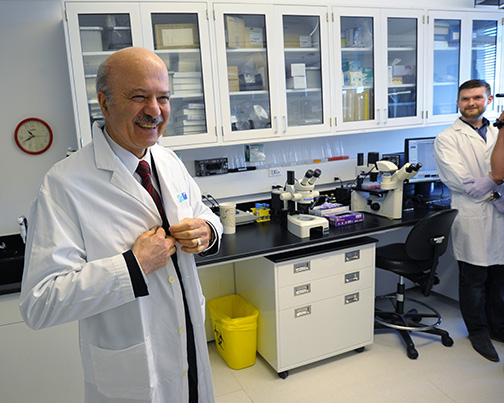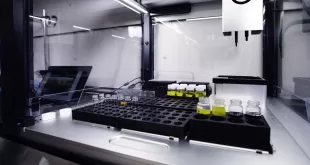Ontario’s life sciences sector is a community of dynamic change and growth. We spoke to Ontario’s Minister of Research, Innovation and Science to get a read on the sector’s economic progress.
Tell me about the announcement you made recently at Queen′s University about the Ontario Research Fund?
The one that we did at Queen’s University was part of the Ontario Research Fund announcement of a $77-million investment in 75 different projects. Some of these projects were life sciences projects, and the others were basically in other areas of science and technology. It was a great announcement and I think it keeps our research community happy. In the meantime, it’s a good investment for the future economy of the province of Ontario.
Mentioned in the press release on the Ontario Research Fund announcement is the province′s commitment to promoting the use of genomics to solve health issues and supporting the development of disruptive innovation in the field of genomics. Has the provincial government identified genomics as an area of growth?
As you know, we have established the Ontario Genomics Institute and we are also investing in genomics, which is a part of the life sciences, so yes, it is one of the focus areas. Life sciences in general is one of the focus areas of research and innovation for the Government of Ontario and anything related to life sciences, genomics for example, is a part of that major initiative.
What are some of the other new provincial government initiatives that are having an impact on the life sciences industry?
On the venture capital side, we established the Ontario Venture Capital Fund a number of years ago, but in the past four years, since I became Minister [of Research, Innovation and Science], we established the Northleaf Venture Catalyst Fund, and just recently we established another venture capital fund which is called Scale Up Ventures. We are in the process of thinking of establishing a venture capital fund specifically for the life sciences. In terms of venture capital funds our province used to be ranked #12 [in North American venture capital activity in 2009] and now we are #4 [as of 2016]. So I think we are making good progress in the area of venture capital funds, which is a major component of innovation. Availability of venture capital was one of the issues I hit when I became minister. People were saying, “Our innovators go to the U.S. because we don’t have an adequate venture capital fund available,” but now we have made good progress on that.
At this year′s Life Sciences Ontario (LSO) Awards Gala, remarks were made about the lack of government support for the bio industry.
How do you respond?
I certainly don’t agree. Life science is a major focus sector for the government, so we try to do whatever we can to promote life sciences. Life sciences is employing about 60,000 Ontarians and contributes to our economy in billions of dollars – I believe it’s about $35 or $36 billion in terms of GDP contribution – and those 60,000 jobs are good jobs. In terms of ranking, life sciences in Ontario ranks one of the top five or six in the Americas and our aim is basically to increase our ranking from those numbers to number three or one of the top third life sciences jurisdictions in North America. Recently, we created an initiative called Ontario Business Growth Initiative with $400 million in investments. All these investments we are making – not only in life sciences, but in innovation as a whole – are all connected to each other. When we are talking about life sciences, how much, for example, does computer technology affect life sciences? It’s enormous. The life sciences have become more and more interdisciplinary, so whatever we invest in, it also helps life sciences indirectly as well. We are investing quite heavily in innovation.
What are some of the exciting things your office is doing this year that will affect the industry?
One of the things we are doing is the hiring of Ontario’s first Chief Science Officer or Chief Scientist. I think this is a major initiative and it’s going to put Ontario on the map in the sense that we will have a dedicated office for science in Ontario and, as you know, our economy is moving more and more towards a science-based economy and a knowledge-based economy. I think the creation of this office will send the right signal to the community. A Chief Science Officer will basically help us accelerate science as a whole in the province of Ontario, will help us attract more researchers and scientists and talented people to Ontario, and will help us to develop a vision for science and technology in the province of Ontario for the future. Also, we expect that the Chief Science Officer will help the government make decisions based more on evidence and science rather than on the feelings of people.
You became Minister of Research, Innovation and Science in 2013. Looking back, what changes have you observed in the life sciences industry since you’ve been in office?
I think of a number of points. One of them is the establishment of the Ontario Institute of Regenerative Medicine and the other was increasing the funding for the Ontario Brain Institute. The third one could be saving the MaRS West Tower, and its construction and completion, and now this tower is 100 per cent rented out and leased out. [The West Tower] has brought in companies such as JLABS, which belongs to Johnson & Johnson, the biggest pharmaceutical company in the world with $60 billion in revenue. They brought their first incubator lab outside of the U.S. to Toronto, to MaRS, so I think that is a major achievement. Another achievement, I think, is Blue Rock Therapeutics [launched by Bayer AG and Versant Ventures]. This company will, I believe, be investing around $225 million USD in regenerative medicine for heart diseases. They are investing in Ontario in order to commercialize stem cell technology for the treatment of heart diseases. This is huge. As you know, 25 per cent of the population die of heart diseases so finding the technology to treat these diseases without any operation is a major advancement. They are investing heavily and they are based at MaRS. These are all part of the achievements of the past four years.
Looking forward, is there anything you would like to change or improve about the life sciences industry or in the relationship between the industry and the provincial government?
There are a number of things we should aim for. One is we have to internationalize our research community, in particular in the life sciences. We have to make sure our researchers are well connected to the international community – not only research scientists but our entrepreneurs as well – through the creation of capital funds and collaboration with other funds out of Canada. The other area is that we need to do as much public education as we can to let the public know that investment in research and innovation, in particular life sciences, is a part of economic growth. When it comes to life sciences, we are not only growing our economy, but by investing in innovation and research we are helping our population as well – not only our own population, not only Ontarians and Canadians, but 700 billion people on this planet as well. We need to bring the industry more into the picture. The industry’s investment in research and innovation in Ontario and Canada is not comparable with the amount done in the UK and the U.S., for example, so more collaboration is needed from the industry side. But of course we also need to do more work. There is always room for more work.
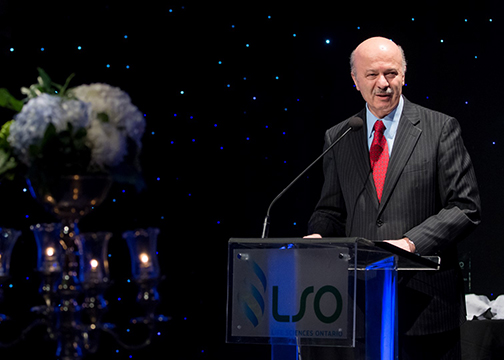
Ontario is the largest life sciences jurisdiction in Canada with more than
50% of
the total Canadian life
sciences economic activity.
 BioLab Business Magazine Together, we reach farther into the Canadian Science community
BioLab Business Magazine Together, we reach farther into the Canadian Science community
